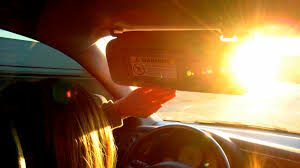
The time change this weekend (remember—fall back, spring forward) has AAA Oklahoma telling motorists to prepare for a change in driving conditions. Namely sun glare in the morning and reduced visibility in the evening commute.
“Ninety percent of drivers’ reaction time is dependent upon their vision, which is severely limited at night,” said Leslie Gamble, Public and Government Affairs manager. “Motorists should focus on night driving safety measures the moment the sun sets. It’s one of the most challenging times to drive because motorist’s eyes are frequently adjusting to the increasing darkness.”
AAA recommends wearing high-quality sunglasses and adjusting the car’s sun visors as needed. Late afternoon driving also presents a similar glare problem, so drivers should take the same precautions. Use of the night setting on rearview mirrors can reduce glare from headlights approaching from the rear.
The time change can also cause disturbed sleep patterns, and when combined with the earlier dusk and darkness during the evening commute, become a formula for drowsy driving and fatigue-related crashes.
Sleep-deprived drivers cause more than 6,400 deaths and 50,000 debilitating injuries on American roadways each year, according to the National Sleep Foundation (NSF).
“While many will enjoy an extra hour of sleep this weekend, few commuters and motorists realize the added dangers that can come as the result of a time change – especially when they are behind the wheel,” said Gamble. “Although we gain an hour of sleep, our sleep patterns are disrupted. This can result in drowsy driving episodes and it is unsafe to drive when we are feeling sleepy.





